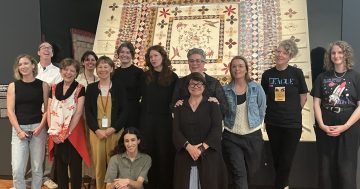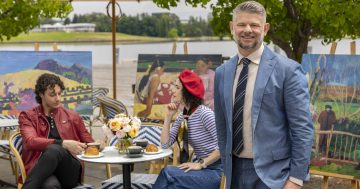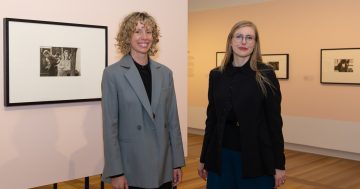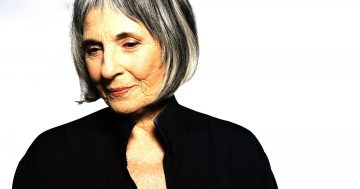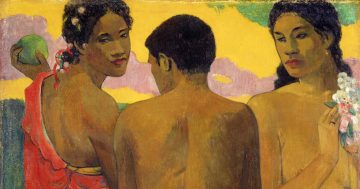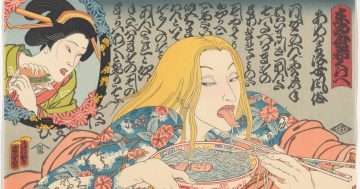
The Rajah Quilt, 1841, was designed by Kezia Hayter and made by women aboard the Rajah convict ship. It will take centre stage at a new NGA exhibition in March. Photo: National Gallery of Australia.
The most requested artwork by visitors to the National Gallery of Australia, the Rajah Quilt, will go on exhibition in Canberra from March.
Made from about 3000 pieces in 400 different fabrics, the Rajah Quilt was hand-stitched by women prisoners aboard the Rajah, a British convict ship bound for Australia in 1841.
Measuring around 3.5 metres by 3 metres, the quilt is rarely exhibited because of its size and fragility. It is a pieced-medallion style quilt, hand stitched from over 16 metres of fabric by, in many cases, inexperienced sewers under exceptionally difficult conditions. It was last seen at a special exhibition at the National Gallery of Victoria in 2020. Pre-COVID, the NGA aimed to schedule a viewing at least annually.
Curator of Australian art at the NGA, Simeran Maxwell, said the Rajah would take pride of place in A Century of Quilts, an opportunity to see a special collection of National Gallery textiles showcasing the artistic expression of women from 1840 to 1940. The exhibition features 22 works, demonstrating the innovation of techniques in Australian quilt-making and the ingenuity of their makers, many of whom endured financial hardships, geographic isolation and poor health.
“Quilts and textile art are not just stitched fabric, they are woven narratives that tell the tales of cultures, emotions and shared human experiences,” Ms Maxwell said.
“In the intricate patterns and vibrant hues, we find a language that transcends time, connecting generations and communities.
“Several works in this exhibition stand as a testament to the unrecognised communal work of women, who often came together to create works to be passed down through generations and act as touchstones of remembrance. Enduring the harshness of time, these works weave a tangible link to this country’s early societies and the women who made them.”
She said the Rajah, for example, showed the remarkable sewing kills of the women – and it also couldn’t be more graphic with bits of blood still visible on it, perhaps when the women pricked their fingers.
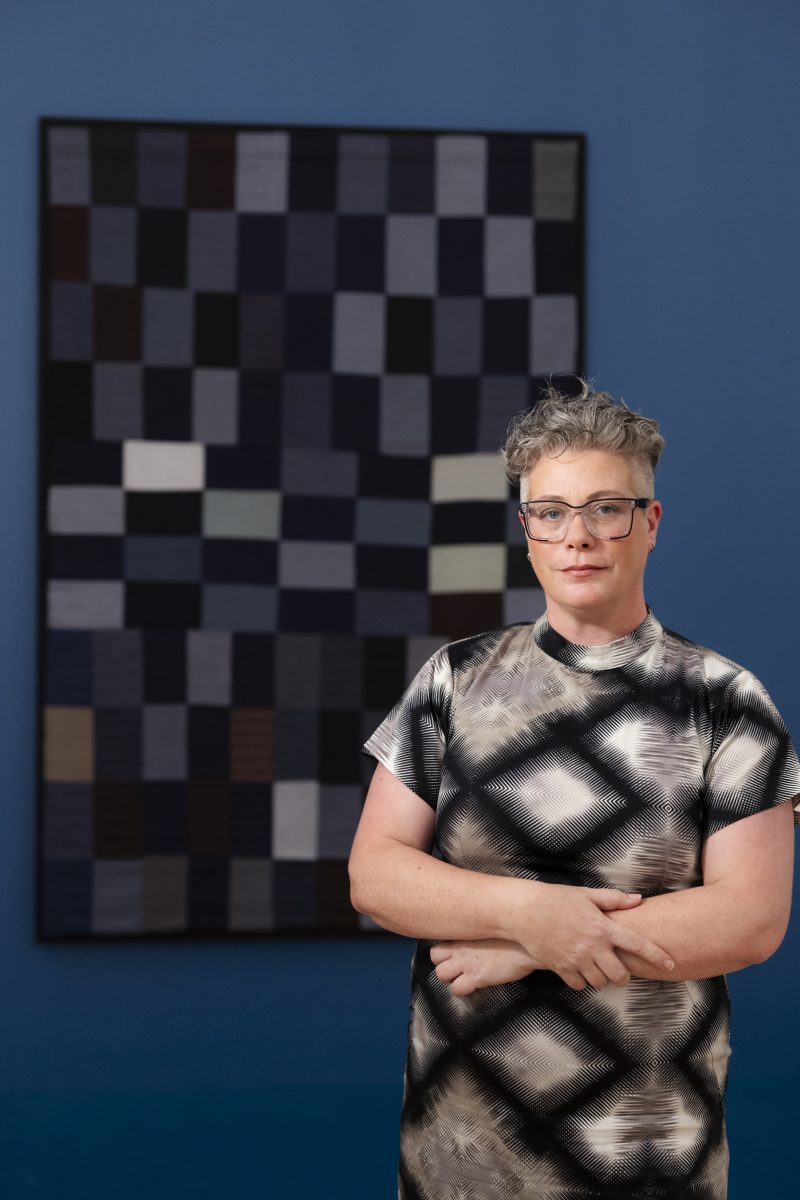
Curator of Australian Art at the NGA, Simeran Maxwell with a quilt by Caroline Mary West, circa 1925. Photo: Kerrie Brewer.
“It really is just the size that precludes it coming out more often – it’s a lot bigger than any bed I know,” she joked. “It is also a huge job to display it, very labour-intensive.
“You can’t lay it flat because you won’t be able to see it all, and if you hang it, it must be on a special angle so it doesn’t pressure the seams.”
The quilt was given to the NGA in 1989 by Les Hollings and the Australian Textiles Fund.
Not much of its provenance is known, except that it was given to the Tasmanian Governor’s wife when the Rajah landed and somehow returned to the United Kingdom. It made a home in Scotland for some years before being donated to the NGA through the Australian Textiles Fund.
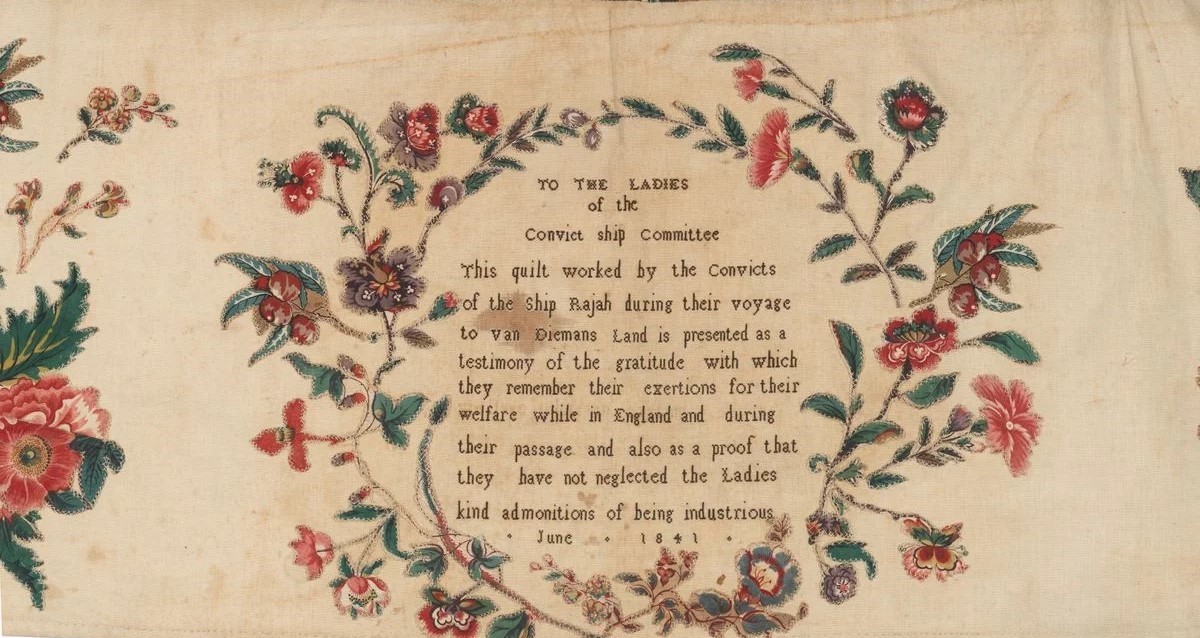
An inscription along the border of the Rajah Quilt reveals the circumstances under which the women were placed. Photo: National Gallery of Australia.
The good news, Ms Maxwell said, was that it had probably been stored away for many years, which accounted for its excellent condition despite the fragility of such a hand-made work.
“Clearly it wasn’t used, and that’s a blessing for us because it is in an extraordinarily good condition. It even displays the printing techniques used in Britain at the time. If it had been used, it would not have been in nearly as pristine a condition.”
A Century of Quilts will also feature works by First Nations artists, illustrating the cultural diversity of quilting in Australia.
This exhibition continues to build on the National Gallery’s Know My Name initiative, which celebrates the work of all female artists, highlighting their contribution to Australian cultural life.
A Century of Quilts opens at the National Gallery of Australia on 16 March and runs until 25 August 2024. Entry is free.












